Thinking about changing your digital agency? It’s a big move, but it doesn’t have to be overwhelming. In this blog post, we’ve put together a straightforward checklist to help you transition smoothly to a new digital agency, from assessing your needs to managing the handover process.
Secure a Point of Contact at the Previous Agency
It’s crucial for you, the client, to have a direct line of communication with your former agency. Whether you already have a contact or need to establish one, this connection will simplify the transition process. Keep in mind, the agency might be less motivated to assist, especially if they’re not being compensated anymore. Approach them with a clear, organized request, detailing precisely what you need, and aim to minimize the number of times you need to reach out to them. Don’t forget to inquire about your history with them and any potential obstacles to cooperation, such as unpaid invoices.
Website Management
Ideally, you should have complete control over your website and hosting services. However, it’s not uncommon for clients to rely entirely on their previous agencies for access. If that’s the case, you’ll need to request access to the Content Management System (CMS), File Transfer Protocol (FTP), and hosting control panel to facilitate the website’s migration. If you’re not granted direct access to the CMS, you might need to gain permissions through database modifications or specific scripts.
Domain Ownership
Ensure that you retain ownership of your domain and have access to the domain registrar, particularly if you’re planning a website migration. It’s vital to avoid situations where the previous agency has control over the domain and can block or complicate the transfer or modification of DNS settings.
Analytics Insights & Access
Understanding your website’s historical performance is essential for benchmarking future campaigns. You should have access to Google Analytics for insights into past performance, including notes, dashboards, event tracking, and goal setting. Ideally, you would have created the Google Analytics account yourself and shared access with both the previous and new agencies. If your previous agency created the account, ensure that they can transfer full access to you to avoid limitations on features and insights.
If the previous agency managed separate accounts or properties within Google Analytics for each client, they should be able to grant you full access without issue. However, if access is restricted to certain properties, it could limit your new agency’s ability to fully utilize all features, such as filters, and might leave the old agency with access to future data.
For managing users in Google Analytics, reference: Google Analytics Help
Google Search Console & Bing Webmaster Tools Access
These platforms offer invaluable data on SEO, website health, rankings, penalties, and more. While you might request the previous agency to grant you access, if you control the website, you can add yourself. It’s also crucial to revoke the previous agency’s access once they’re no longer working with you.
For verifying ownership and managing users in Google Search Console and Bing Webmaster Tools, see their respective help pages:
For managing users in Google Search Console, visit: Google Search Console Help
For managing users in Bing Webmaster Tools, visit: Bing Webmaster Tools Help
Google Tag Manager Access
If the previous agency utilized Google Tag Manager for tracking and script management, gaining access is essential. This tool might contain crucial tracking codes and configurations for your website’s analytics.
For managing users in Google Tag Manager, visit: Google Tag Manager Help
Google Business Profile Access
You should aim to be added as an owner on your Google Business Profile listings. In cases where the agency set up these listings, ensure you gain access to maintain accurate and updated business information.
For managing users in Google Business Profile, reference: Google Business Profile Help
Ad Accounts Access
If your advertising accounts were set up correctly, you’ll have administrative account access and shared access with the previous agency. Your new agency will require access to these accounts, and it is advisable to remove the previous agency from the accounts as soon as possible.
For granting access to Google Ads, consult: Google Ads Help
For granting access to LinkedIn Ads, consult: LinkedIn Ads Help
For granting access to Meta Ads, consult: Meta Ads Help
Social Media Access
When transitioning to a new digital agency, it’s crucial to ensure seamless access to your social media accounts. This access enables your new agency to manage campaigns, engage with your audience, and analyze performance metrics effectively. Here’s a step-by-step checklist to guide you through the process for each major platform:
Access Level Required: Full administrative access is recommended.
Steps to Grant Access:
- Go to your Page settings in Facebook.
- Select ‘Page Roles’ on the left sidebar.
- Add your new agency as an ‘Admin’ by entering their email or Facebook name.
Additional Information: For further details, refer to Facebook’s official Help Center.
Access Level Required: Account must be converted to a business profile for full access.
Steps to Grant Access:
- Ensure your Instagram is linked to your Facebook Page.
- Through Facebook Page settings, grant the agency access to your Page.
- This will automatically provide them access to the Instagram account.
Additional Information: Instagram’s Help Center provides more insights on managing access.
Access Level Required: Super admin or content admin roles are necessary.
Steps to Grant Access:
- Navigate to your LinkedIn Page and click on ‘Admin Tools’ at the top right.
- Select ‘Page Admins’ and add your agency contact as an admin.
Additional Information: LinkedIn’s Help Page offers comprehensive guidance on admin roles and permissions.
YouTube
Access Level Required: To grant full access, make the new agency a channel owner or manager.
Steps to Grant Access:
- In YouTube, go to your channel’s settings.
- Under ‘Permissions’, click ‘Manage Permissions’.
- Invite the agency via their email and assign the appropriate role.
Additional Information: YouTube’s Support Page can help with more details on access levels and management.
X (formerly Twitter)
- Access Level Required: Administrative access is needed for complete control.
- Steps to Grant Access:
- Log into your X account and navigate to your settings.
- Look for ‘Account Access’ or similar section.
- Add the agency by their X username or email and set as an admin.
Additional Information: For more information, visit X’s Help Center.
Secure All Passwords
Ensure you collect any passwords related to social media accounts, relevant software, citation websites, blogs, or any platform where the previous agency might have credentials.
Organizing All Digital Content Assets
Transitioning to a new digital agency provides an excellent opportunity to audit, organize, and optimize your digital content assets. These assets, including images, videos, infographics, PDFs, and white papers, are invaluable resources that can enhance your marketing efforts, improve audience engagement, and contribute significantly to your online marketing strategy. Here’s how you can effectively organize your digital content assets:
1. Audit Your Existing Content: Begin by taking inventory of all your digital assets. This involves identifying what content you have, where it’s stored, and its current use in your marketing strategy. An audit helps highlight what assets you have at your disposal, any gaps in your content library, and opportunities for repurposing content.
2. Establish a Centralized Content Repository: Create a single, accessible location where all your digital assets are stored. This could be a cloud-based platform (e.g. Google Drive, Dropbox, Box) or a digital asset management (DAM) system that supports various file types and offers robust search capabilities. Centralizing your content simplifies management and accessibility, ensuring that your new agency and team members can easily find and utilize assets.
3. Implement a Consistent Naming Convention: To further enhance organization and retrieval, adopt a consistent naming convention for your files. This might include information such as the content type, subject matter, creation date, or version number. A clear, logical naming system reduces time spent searching for assets and minimizes the risk of using outdated versions.
4. Categorize and Tag Your Content: Group your assets into relevant categories and use tags to mark them with keywords. This step is crucial for making your content easily searchable and can help your new agency quickly understand and locate the assets they need for various campaigns or projects.
5. Maintain a Content Usage Guide: Develop a guide that outlines how each type of asset should be used, including branding guidelines, preferred contexts for use, and any restrictions. This ensures consistency across your marketing efforts and helps your new agency align with your brand’s voice and visual identity.
6. Regularly Review and Update Your Assets: Digital content assets should be dynamic, not static. Schedule regular reviews to update or archive outdated assets. Keeping your content fresh and relevant not only supports your marketing strategy but also helps maintain an organized, efficient content library.
7. Secure Your Assets: Implement appropriate security measures to protect your digital content. This includes controlling access rights, backing up files, and ensuring compliance with data protection regulations. Security is paramount to safeguarding your assets against unauthorized use or loss.
Campaign & Site History
Understanding what the previous agency accomplished and planned is foundational for your future strategies. Request any available information on past services, website redesigns, branding materials, advertising strategies, domain usage, campaign files, keyword targets, content strategies and assets, competitor research, performance reports, audits, and penalties (if any). This historical insight provides a valuable baseline for your new initiatives and helps identify opportunities for improvement.
Remember the adage, “Trust, but verify.” Review the previous agency’s work and access levels carefully to ensure they align with your current and future needs. This not only helps in identifying missed opportunities but also in laying a solid foundation for your next agency.


Comments
This is a really helpful blog! The checklist is clear and covers all the important steps to smoothly transition to a new digital agency. I especially liked the sections on securing access to your accounts and organizing digital assets. This will definitely make the process less stressful. Great tips!